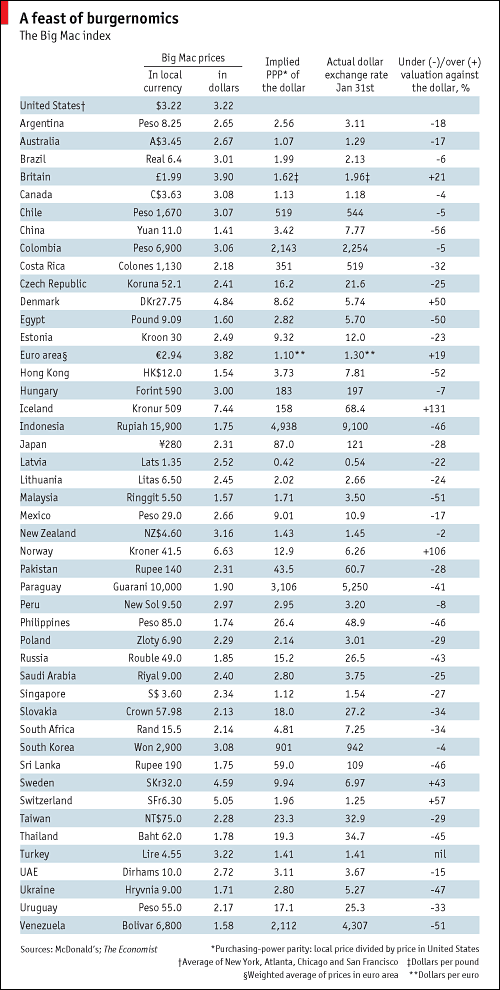The Big Mac Index & McCurrencies
The Big Mac index is based on the theory of purchasing-power parity (PPP), according to which exchange rates should adjust to equalise the price of a basket of goods and services around the world. Our basket is a burger: a McDonald’s Big Mac.
The table below shows by how much, in Big Mac PPP terms, selected currencies were over- or undervalued at the end of January.
The most overvalued currency is the Icelandic krona: the exchange rate that would equalise the price of an Icelandic Big Mac with an American one is 158 kronur to the dollar; the actual rate is 68.4, making the krona 131% too dear. The most undervalued currency is the Chinese yuan, at 56% below its PPP rate; several other Asian currencies also appear to be 40-50% undervalued.
The index is supposed to give a guide to the direction in which currencies should, in theory, head in the long run. It is only a rough guide, because its price reflects non-tradable elements—such as rent and labour. For that reason, it is probably least rough when comparing countries at roughly the same stage of development. Perhaps the most telling numbers in this table are therefore those for the Japanese yen, which is 28% undervalued against the dollar, and the euro, which is 19% overvalued. Hence European finance ministers’ beef with the low level of the yen.